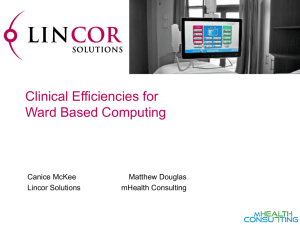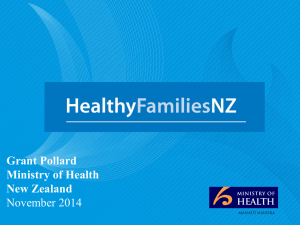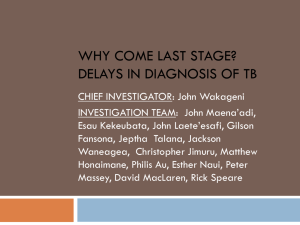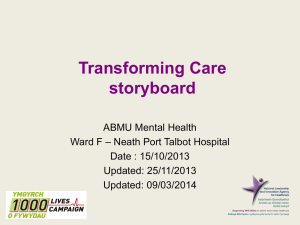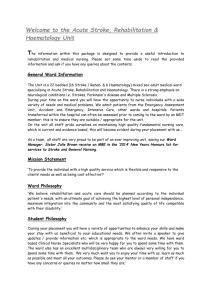PowerPoint - Peninsula Community Health
advertisement
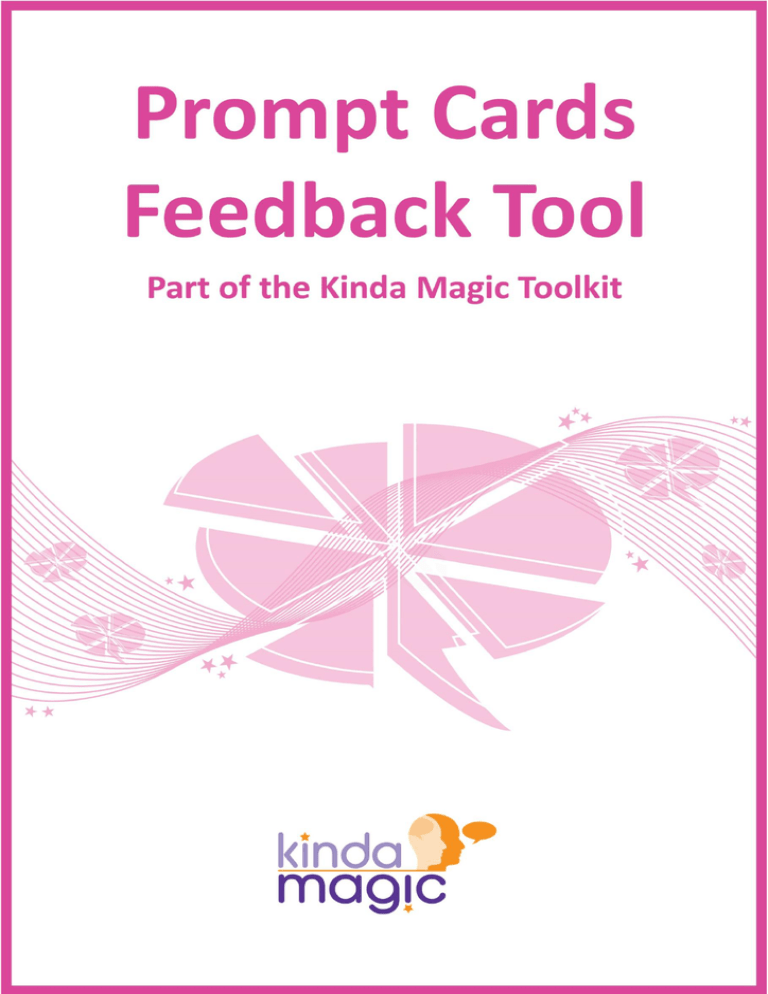
Guidance for using the Prompt Cards Tool Introduction This guidance has been developed to assist in capturing the service/care experience of patients who have difficulty speaking and with varying degrees of difficulty in cognition. Using these Prompt Cards and completing the Patient Information Profile (PIP) gives us confidence that we can capture feedback from many more of our service users. This ensures that all patients have the opportunity to participate and feedback to us about their experience whilst in our care. We found that to gain feedback from a person with communication difficulties such as that caused by a stroke, we needed a variety of tools that helped them overcome some of the barriers of expression and altered cognition that stroke causes. To support the Prompt Cards, and assist the Staff Interviewer (SI), we developed a Patient Information Profile (PIP) to inform the SI before/during the interview. We have developed tools that have a wider application than for use merely with stroke patients; the Prompt Cards and PIP could easily be tailored for other tools within the Kinda Magic Toolkit. These also serve people with Parkinson’s disease and other neurological causes of aphasia and would also be useful for people with more significant learning disability who may find the Easy Read Tool too challenging. It might also help someone with early onset dementia. In essence, SIMPLICITY was key in developing our Prompt Cards, we used photographs, very simple language with few words, and placed emphasis on the key words by highlighting them in bold, using black font on a yellow background. This works well for some patients but we found that for others, showing response options alongside the question and photograph could be confusing for them, giving them too much information in one place. We have therefore shown (with a dotted line) where they could be separated to make separate ‘response cards’. This means the tool can be tailored for individual patients; the completed PIP helps to inform this decision. Preparation for SI prior to beginning using Prompt Card tool Step 1. Staff Interviewer must complete first section of the PIP with the assistance of a Specialist Therapist/Ward Nurse who has both information, knowledge and experience of the patient. This is of paramount importance to inform the SI who would not be able to use the tool without this information. Also consider: Therapist/ward staff to accompany and introduce SI to patient. Step 2. Assess the immediate ward environment and ensure it is right for the patient. Is the area busy and/or noisy? A patient with aphasia needs time and space to concentrate in order to process the information and too much external stimuli might just make the exercise too challenging. Is the temperature and lighting OK? Assess if the patient feels comfortable and if necessary try to adjust the environment where possible or take the patient to an area that is more suitable. Step 3. Ask/seek affirmation (consent) with the patient and/or relative prior to beginning interview. Step 4. Ask the questions and capture responses on the question response form. Step 5. Complete the second section of the PIP. Feedback to ward staff Page 1 Guidance for Staff Interviewer: 1. Consider your tone of voice. Talk at a normal level, do not raise your voice. 2. Consider your body language. You need to appear confident in your approach as the patient quite likely lacks confidence in their own ability to give feedback. 3. Remember to smile. Have a warm open approach. 4. If a carer or visitor is present, still speak to the patient first and only then check with the carer/visitor if something is not clear. 5. Explain clearly that you want to ask some simple questions and that you have cards and pictures to help. 6. Try to seek their affirmation (consent). Keep observing body language. 7. Before starting with the questions, decide what set of laminated response cards to give the patient. You might want to let them see the range and choose, but be careful not to overload them with choice or confuse them. 8. Place the response cards where the patient can easily reach them to indicate their answer. 9. Introduce the prompt cards one by one. Allow the patient to look at the card before you speak, and then ask the question clearly whilst indicating the words. 10. Provide the person with plenty of time to process the information and respond. Be patient. 11. Observe the patient carefully throughout. They may tell you things by their facial expression and body language. 12. Take your time and don’t rush your communication. 13. Use gestures and facial expressions to reinforce what you are saying. Page 2 Do you get enough to drink? Page 3 Do you like the food? Page 4 Are you helped with pain? Page 5 Is your bell answered quickly? Page 6 Do you have privacy? Page 7 Are staff kind to you? Page 8 Do you help plan your care? Page 9 Is it quiet at night? Page 10 Is the ward clean? Page 11 Are the toilets clean? Page 12 Patient Information Profile Card Hospital / Ward: Date: Male / Female: Length of Stay: Staff Interviewer: Patient ID: Specialist Therapy / Ward Nurse: Part 1. Staff Interviewer to complete with Specialist Therapist / Ward nurse prior to commencing questionnaire Diagnosis e.g. stroke / dementia: Hearing: Vision: Level of understanding / comprehension: Single words / ability to form sentences: Verbal expressions: Personality / character: Ability to read: Ability to write: Inattention. Left / right side affected: Facial expression: Mobility: Speech clarity: Medically well? Nutrition. Assistance with feeding / modified diet / nil by mouth / PEG: Other comments: Part 2. Staff Interviewer to complete during / following completion of questions Location within ward: Consent obtained? How was it gained? Relative / visitor present? Interview time started: How long it took: Tiredness / frustration? Questions – all asked / answered? Other comments: Feedback: how to provide / to who, actions, comments: Page 13 Patient Information Profile Card Hospital / Ward: Patient ID: Staff Interviewer: Date: Question 1 Do you get enough to drink? 2 Do you like the food? 3 Any pain? Are you helped with pain? 4 Do you use your bell? Is your bell answered quickly? 5 Do you have privacy? When dressing / washing 6 Are staff kind to you? Smile / pleasant 7 Do you help plan your care? Who is looking after you? 8 Is it quiet at night? Do you sleep at night? 9 Is the ward clean? 10 Are the toilets clean? Yes Mid No N/A Male / Female: Comments Page 14

